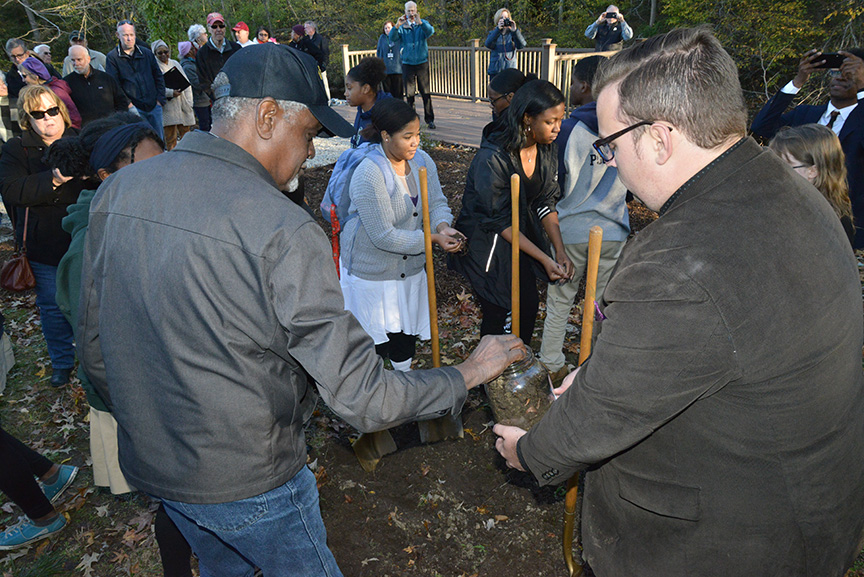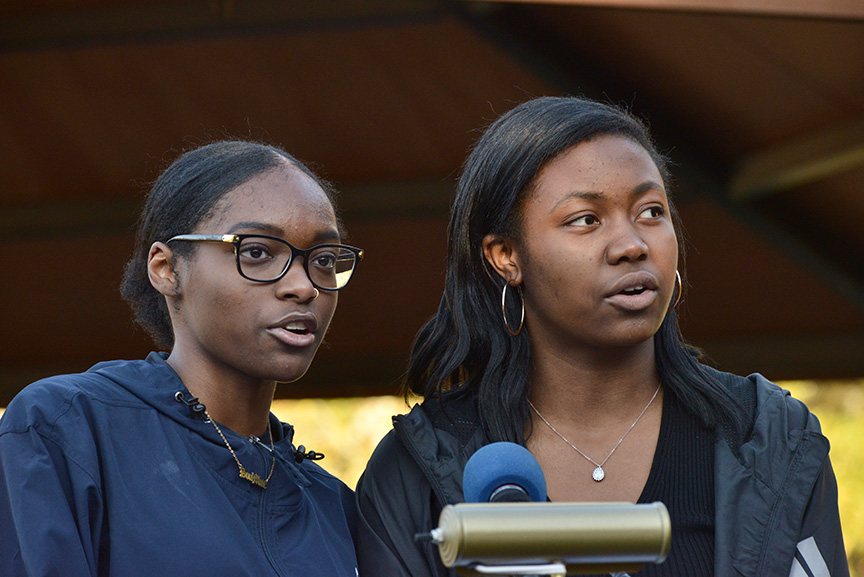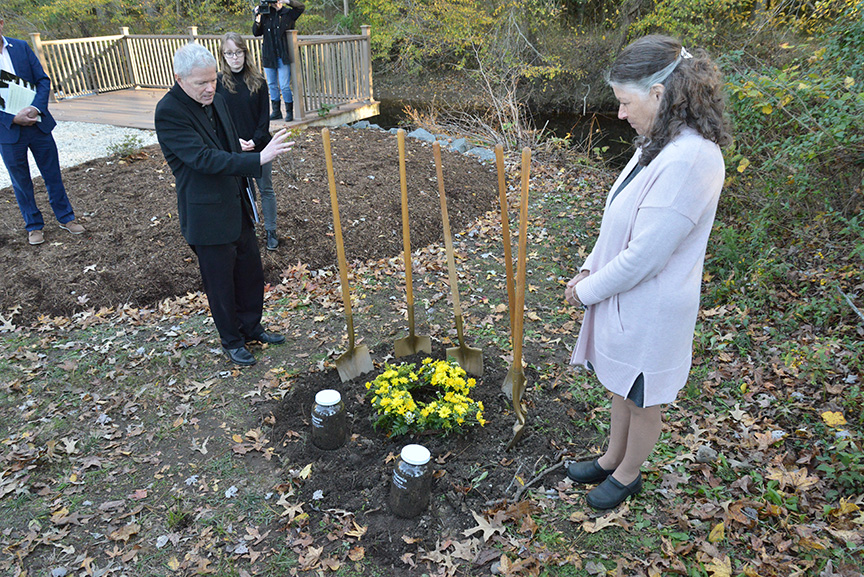LEONARDTOWN, Md. (CNS) — In the dark of night June 17, 1887, a mob lynched Benjamin Hance, hanging the 22-year-old African American man from the branch of a witch-hazel tree near the road to Newtown Neck in Leonardtown.
Hance, a Catholic who worked on an oyster boat, had been accused of making an “improper proposal” to a white woman and attempting to attack her.
Three weeks after he had been jailed, but before he faced trial, the mob stormed the jail house, held the jailer at gunpoint and kidnapped Hance, leading him away on horseback. The coroner’s report later noted that a rope with a hangman’s knot had been placed around Hance’s neck.

About 140 people gathered at the site in southern Maryland Nov. 1 in a solemn ceremony to remember Hance and to commit themselves to working for racial justice.
“It’s important to acknowledge this history and that it happened. It’s important to learn from it so we don’t repeat the same mistakes from the past,” said Juliana Oladipo, one of about 50 students from St. Mary’s Ryken High School in Leonardtown who attended the ceremony at Port of Leonardtown Winery Park.
Jesse Harris Jr., a junior at Ryken and member of the school’s Black Student Union, echoed Oladipo. He said acknowledging such a tragic event also involved recognizing the need for people to “walk forward in the future” together.

Students took turns reading a summary of the events surrounding Hance’s death. They also read “Strange Fruit,” a poem by Abel Meeropol about the horror of lynching as dancers from the school performed a dance they choreographed after researching the issue.
Noting the importance of the students’ participation, Catherine Bowes, Ryken’s principal, said: “Pope Francis said to kids, ‘You are the now of God.’ This is one way we can be the ‘now of God.’ … In our everyday lives, we stand up for justice and peace.”
Karen Stone, manager of the St. Mary’s County Museum Division, welcomed the participants, noting that the ceremony was being held on Maryland Emancipation Day, the day in 1864 when the state adopted its new constitution that freed all people in bondage.
“Mr. Hance was accused of a crime but never received a fair investigation or trial,” she said. “Showing complete disregard for the legal system, the mob ended Mr. Hance’s life and was never held accountable for doing so.”
Also reading the narration during the ceremony was Janice Walthour of the St. Mary’s County chapter of the NAACP. She noted the jailer and his wife identified members of the mob to a jury that rendered no verdict and declined to ask the state to charge anyone for the lynching.
“Benjamin Hance was one of at least 28 African American victims of racial terror lynching killed in Maryland between 1877 and 1950 and is the only known documented victim in St. Mary’s County,” she said.
The Equal Justice Initiative has documented more than 4,400 lynchings of black people in the U.S. during that time frame. The story is documented in the new National Memorial for Peace and Justice, which opened in 2018 in Montgomery, Alabama. The memorial includes 800 steel monuments, one for each U.S. county where a lynching occurred. Each monument is inscribed with victims’ names.

During the ceremony in southern Maryland, two jars labeled with Hance’s name were filled with handfuls of soil from the site. One jar was sent to the national memorial and the other jar stayed in the county as part of a traveling exhibit.
Fr. David Beaubien, pastor of St. Aloysius Gonzaga Parish in Leonardtown, joined the ceremony, reciting a passage from St. Luke’s Gospel about Jesus’ suffering and death on the cross.
He offered a prayer, saying participants were consecrating the ground where a grievous wrong was committed. “In return, may peace and reconciliation abound as we look beyond the veil of race and ethnic background and see each other as brothers and sisters in Christ,” he prayed.
Beforehand, Fr. Beaubien noted that Hance was buried in an unmarked grave in the old St. Aloysius Parish cemetery a mile and a half from the church.
In an address during the event, Kyrone Davis, an adjunct professor of business at George Mason University, described lynching as an act of terrorism. He linked such acts of injustice against African Americans to slavery that was introduced to the colony of Virginia in 1619.
“To date, African Americans have been terrorized in this country in one form or another for 400 years,” he said.
Elliot Spillers, a fellow at the Equal Justice Initiative, said the soil collected from the spot of Hance’s lynching also harkened to the soil containing the blood of the enslaved and the sweat of those who labored in the civil rights movement. The soil also represents “the opportunity for new life, for hope,” he said.
To represent that hope, a wreath of yellow flowers was placed on the site.
— By Mark Zimmermann, Catholic News Service. Zimmermann is editor of the Catholic Standard, newspaper of the Archdiocese of Washington.






